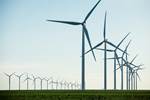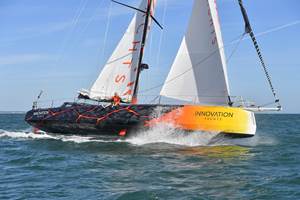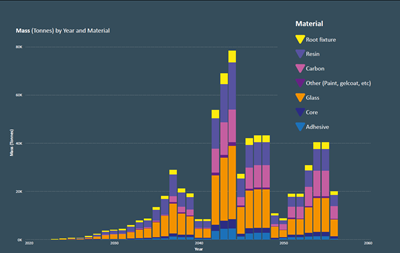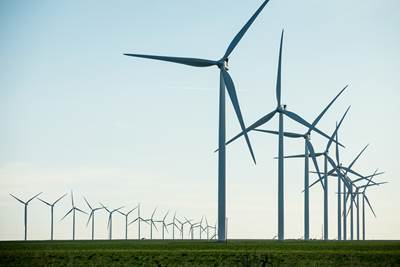Fairmat reaches agreements with Siemens Gamesa, Duqueine, Tarmac Aerosave to recycle composites
Recycled carbon fiber derived from wind turbine blades and aircraft will be transported and analyzed at Fairmat’s facility for consideration in repurposed products.
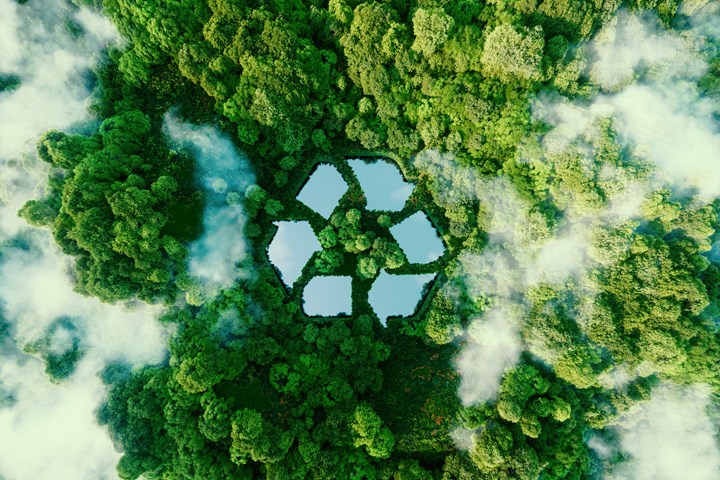
Photo Credit: Getty Images
Deep-tech company (Paris, France) has made several strides toward carbon fiber composites recycling in May 2022 including its first agreement with (Hamburg, Germany) to recycle composite waste from one of the company’s sites in Denmark; a development partnership with the industrial company (Civrieux, France), a manufacturer of composite parts for the aeronautical, automotive, medical and sports and recreation industry; and an R&D contract with France-based , known for its storage, maintenance, transition and recycling of aircraft. These are all add-ons to Fairmat’s original announcement back in Nov. 2021 aiming to recycle Hexcel (Stamford, Conn., U.S.) carbon fiber prepreg.
Under the announced R&D agreement with Siemens Gamesa, Fairmat will collect the composite waste deriving from the manufacturing of wind turbine blades at a Siemens Gamesa production site in Aalborg, Denmark. The waste will next be transported to Fairmat’s production site, FairFactory, located in Bouguenais, to be given a second life in markets such as automotive, mobility, sport and construction.
Following the results of the R&D collaboration, Fairmat and Siemens Gamesa will evaluate the establishment of an ongoing collaboration on the recycling of carbon fiber-reinforced composite waste parts from Siemens Gamesa’s manufacturing processes.
“At Siemens Gamesa we are committed to the transition to a circular economy. We have a desire to minimize the waste from our processes and products, and we rely on partners like Fairmat in our strategic development,” Jonas Jensen, sustainability specialist for Siemens Gamesa, says. “The use of carbon [fiber] composites in the construction of wind turbine blades is likely to increase in the next generation of wind turbines, and it is of utmost importance to SGRE to have sustainable solutions in place to handle the waste materials for this coming volume.”
The company’s new commercial partnership with Duqueine Rhône-Alpes, on the other hand, will enable Fairmat to recycle its production waste, particularly the materials that were used to manufacture the Airbus A350.
Fairmt is expected to recover around 15 tons of waste per year from the Duqueine sites in Massieux and Civrieux, especially from trimming, as well as from “raw” material. The production waste will similarly be transported and repurposed like that of the Siemens Gamesa material waste.
Fairmat believes the partnership represents a supply in carbon fiber-reinforced composites that will strengthen its national operations.
In addition, a major R&D contract signed with Tarmac Aerosave, a subsidiary of France-based Airbus, Safran Aircraft Engines and Suez, will see carbon fiber recycled from end-of-life (EOL) aircraft. Fairmat will also be recovering and analyzing them for possible second life.
If this is successful, Fairmat says it could lead to the signing of a commercial agreement with Tarmac Aerosave for the industrial recovery of all the parts made of carbon fiber-reinforced composites.
Related Content
Composites end markets: Sports and recreation (2025)
The use of composite materials in high-performance sporting goods continues to grow, with new advancements including thermoplastic and sustainability-focused materials and automated processes.
Read MoreEuropean boatbuilders lead quest to build recyclable composite boats
Marine industry constituents are looking to take composite use one step further with the production of tough and recyclable recreational boats. Some are using new infusible thermoplastic resins.
Read MorePartners recycle A350 composite production waste into adjustable-length rods for MFFD
Herone, Spiral RTC, Teijin Carbon Europe and Collins Aerospace Almere recycle A350 thermoplastic composite clips/cleats waste into rods for the all-thermoplastic composite Multifunctional Fuselage Demonstrator’s crown.
Read MoreAll-recycled, needle-punched nonwoven CFRP slashes carbon footprint of Formula 2 seat
Dallara and Tenowo collaborate to produce a race-ready Formula 2 seat using recycled carbon fiber, reducing CO2 emissions by 97.5% compared to virgin materials.
Read MoreRead Next
Viable routes to recycling wind turbine blades found in NCC’s sustainable wind research program
Launched SusWIND program aims to establish a viable circular supply chain to tackle the main challenges of legacy and future composite blades in the U.K.
Read MoreDecomBlades consortium releases specifications for disposal of composite wind blades
The Product Disposal Specifications aim to help industrialize wind blade recycling, detailing materials and components of Siemens Gamesa, Vestas and LM Wind Power blades.
Read MoreCutting 100 pounds, certification time for the X-59 nose cone
Swift Engineering used HyperX software to remove 100 pounds from 38-foot graphite/epoxy cored nose cone for X-59 supersonic aircraft.
Read More

